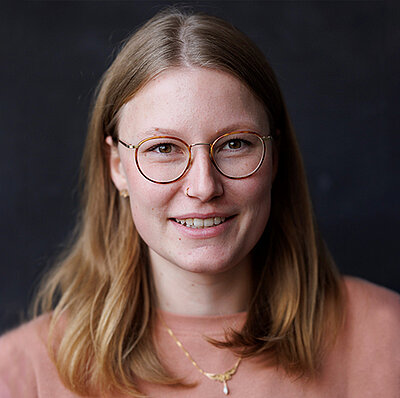RaumLink: Spatial linking of heterogeneous information in infrastructure con-struction
The recording, inspection and assessment of existing bridges and other infrastructure structures are broadly structured by a large number of methodological approaches, technical procedures, standardised codes, guidelines and underlying data models. The further development of basic methods and procedures has been driven in recent years by:
- increasing availability and cost-effectiveness of measurement and acquisition technologies (high-resolution point clouds from LIDAR and SfM methods, networked sensors in SHM, digital photography, etc.).
- and the development of object-oriented, parametric building information models (BIM, IFC for Bridge, IFC for Infra, OKSTRA, ASB-ING).
A wide range of data, information and media forms are used for the currently established measurement, documentation and testing procedures. However, this information is only loosely and mostly implicitly available and so far not in common conceptual and explicit information spaces. Therefore, they can only be viewed, analysed and evaluated together to a limited extent and, in the medium term, merged into comprehensive iterative digital twins: 2D planning documents, photo-documented damages of annotated image areas (crack images, gravel nests, corrosion) stand next to semi-structured point cloud data sets of different provinces, large-scale parametric BIM models and high-frequency data streams of sensor data for remote monitoring in the course of structural health monitoring. The combination of these partial views and representations into an analytical overall view can so far only be carried out by experienced technical planners and remains mostly implicit. Only through explicit, machine-readable links, however, can data be structured and made accessible, for example, on a large scale for nationwide overview dashboards, machine learning methods for damage classification, comparative testing methods, multi-scale digital twins and similar data-intensive applications.
For the explicit linking of information, the concepts of multi-models (Scherer et al), information containers in common data environments (Common Data Environments, DIN SPEC 91391) and Information Containers for linked Document Delivery (ISO 21597, ICCD) have established a series of conceptual foundations and technical standards for relating object- and attribute-specific information fragments to each other. However, creating these relationships involves enormous curatorial effort and usually remains at the level of superficial document assignments ("Photo of crack X belongs to bridge Y. Bridge Y shown in drawing Z").
The approach pursued in this sub-project is to transfer the different spatial descriptions of stationary artefacts of the built environment in order to assign the different types of information to each other. What is located in the same spatial areas based on the location descriptions in the respective format belongs together in different gradations: It refers to the same conceptual entity, is related to it or describes partial aspects.
Broad spatial assignments as prescribed by RI-EBW-PRÜF 2017 ("slab, concrete, one spot, spalling with exposed reinforcement, area 0.05 m2, 1. field, start of field, see sketch") cannot yet be automated and linked with a component group, segmented point cloud clusters, or marked areas of a photo in a precise or fuzzy manner. Furthermore, no procedures have yet been established for projecting into other spatial models and dimensions (2D plan → 3D model, CAD/BIM → GIS). In existing systems such as SIB-Bauwerke for data storage, explicit spatial links with future growing numbers of multi-dimensional parametric models, close-meshed and high-frequency sensor data and simulation models are missing as they are being researched and developed in other sub-projects of the SPP.
The partial information differs in spatial scales: From the geographic and topological position in the overall infrastructure system of the rail and road network to millimetre-precise descriptions of damage to building components. Different conceptual approaches to information granularity, semantics and mapping depth of the respective underlying model schemas and instances make merging (mapping and alignment) with Linked Data and Semantic Web approaches difficult or even impossible, despite successfully overcoming syntactic and format-related challenges of interoperability ( Beetz and Borrmann 2018).
Contact
Publications
Peer-Reviewed Journal Paper
Göbels, A., & Beetz, J. (2025). Extracting Spatial Information from Semi-Formal Textual Data: A Graph-Based Method for Automatically Deriving Three-Dimensional Bridge and Damage Models from Legacy Bridge Maintenance Data. Automation in Construction. (Under Review)
Conferences
Heise, I., Göbels, A., Borrmann, A., & Beetz, J. (2025). Concept for Large-Scale Evaluation of Spatial Relations for Road Infrastructure Management: A Graph-Based Federated Digital Twin Approach for Comprehensive Querying of Heterogeneous Infrastructure Datasets. The 32nd EG-ICE International Workshop on Intelligent Computing in Engineering, Glasgow, Scotland, UK.(Accepted)
Göbels, A., & Beetz, J. (2024). Relative Location Ontology: An ontological model for representing directional topological relationships between spatial entities in oriented space. LDAC 2024 – 12th Linked Data in Architecture and Construction Workshop, Bochum, Germany.
Göbels, A., Schulz, O., & Beetz, J. (2024). Towards a Common Digital Space: Proposing a Schema for Spatially Linking Heterogeneous Resources. Proceedings of the 41st International Conference of CIB W78. CIB W78, Morocca, Marrakech. itc.scix.net/paper/w78-2024-13
Heise, I., Göbels, A., Borrmann, A., & Beetz, J. (2024). Enabling Comprehensive Querying of Road and Civil Structure Data using Graph-based Methods. Proceedings of the 41st International Conference of CIB W78. 41st International Conference of CIB W78, Marrakech, Morocco. itc.scix.net/paper/w78-2024-18
Schulz, O., & Beetz, J. (2024, Juni). Aligning openCDE APIs with Linked Building Data through Constrained Containers in Common Data Environments. 12th Linked Data in Architecture and Construction Workshop. Linked Data in Architecture and Construction Workshop, Bochum, Germany.
Schulz, O., Werbrouck, J., & Beetz, J. (2023). Towards Scene Graph Descriptions for Spatial Representations in the Built Environment. Proceedings of the 30th EG-ICE International Workshop on Intelligent Computing in Engineering. EG-ICE 2023: International Conference on Intelligent Computing in Engineering, London, United Kingdom.



![[Translate to English:] Heterogene Informationen zu Brückenmodelle: Übersicht, der generierten Daten](/fileadmin/_processed_/8/4/csm_Bild1-linkeddata_klein_0966a1e765.png)
![[Translate to English:] Flussdiagramm der zu verarbeitenden Daten](/fileadmin/_processed_/1/a/csm_Bild2_Prozess_ca2cfe2e6a.png)


